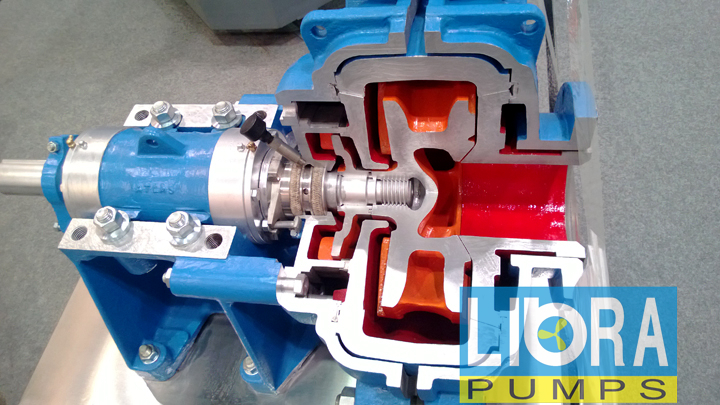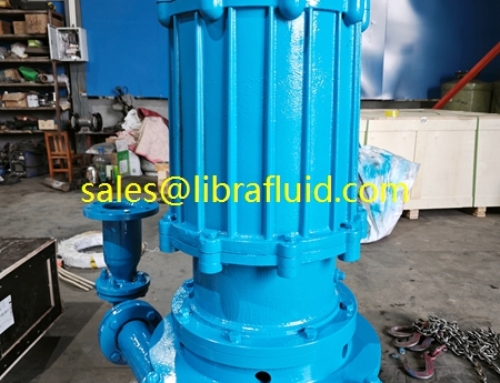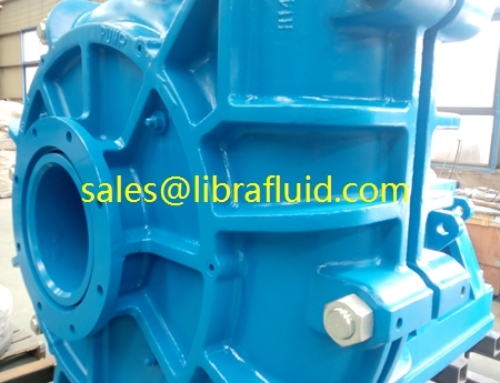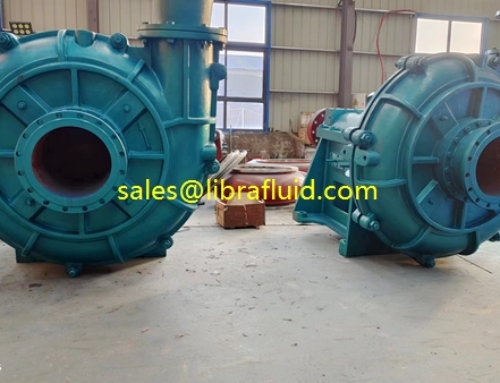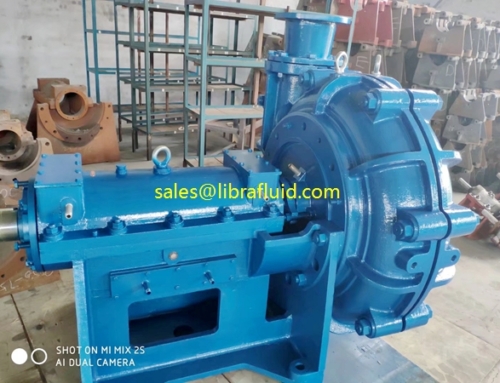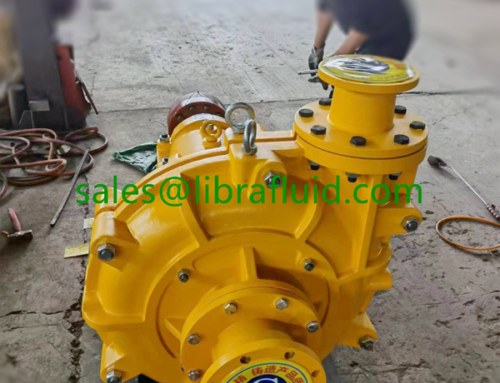Slurry pumps are built to handle thick, abrasive, or solids-filled slurries. The pumps are typically made with durable material so that they can handle abrasive fluids over long periods of time without excessive wear.
Slurry pumps are available in several different types. Slurry centrifugal pumps are usually single stage, end suction configuration. The pumps are often made with durable high nickel iron to minimize the abrasive wear on the pump’s parts. As an alternative to hardened high nickel iron, slurry pumps may be lined with rubber to protect against wear. This distinction is dependent on the velocity, size and shape of the abrasive particles in the slurry. Centrifugal slurry pumps use replaceable liners on both sides of the casing. In some cases, these liners can be adjusted while the pump is running. This allows operations that run 24-hours a day – such as minerals processing plants — to change the pump’s impeller clearance without shutting down, ensuring high productivity and maximum pump efficiency.
Positive displacement slurry pumps are often a type of diaphragm pump that uses a reciprocating diaphragm to expand or contract the pumping chamber — either mechanically or by pressurized air. As the diaphragm expands, it draws slurry or sludge into the chamber through a valve designed to prevent backflow. When the diaphragm contracts, fluid is pushed through the out take side of the chamber.
Slurry pumps are best used to process fluids that contain abrasive solids. These applications include large mining, mine slurry transport and minerals processing plants. They are also used in sand and gravel dredging, as well as plants that produce fertilizers, cement, steel and salt. Slurry pumps are sometimes found in agricultural processing facilities and wastewater treatment plants.

